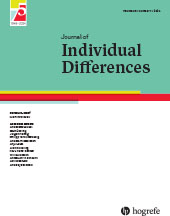Integrity and Moral Flexibility
Self-Proclaimed Integrity Relates to Adapting Moral Judgments to Appear Principled
Abstract
Abstract: People with high integrity should stubbornly insist on maintaining their moral stances regardless of how their stances will make them appear. However, we examined whether people who claim to be high in integrity will express different moral stances to appear high in integrity. Participants (N = 433) self-reported their integrity and then read and responded to hypothetical moral dilemmas that introduced tension between utilitarian and deontological moral principles. Participants reported their willingness to choose the utilitarian (vs. deontological) option in each dilemma under conditions in which choosing the utilitarian option signaled high integrity (utilitarian-signals-high-integrity condition) or choosing the deontological option signaled high integrity (deontological-signals-high-integrity condition). Generally, participants reported greater willingness to choose the utilitarian (vs. deontological) option in the utilitarian-signals-high-integrity (vs. deontological-signals-high-integrity) condition, but this effect was greater amongst people higher in self-proclaimed integrity. Additional analyses produced similar effects after accounting for participant sex, other moral personality traits, and experimenter demand. Broadly, the findings support the possibility that self-proclaimed integrity may be partly based on a self-presentation process.
References
(1991). Multiple regression: Testing and interpreting interactions. Sage Publications.
(2002). The self-importance of moral identity. Journal of Personality and Social Psychology, 83(6), 1423–1440. https://doi.org/10.1037/0022-3514.83.6.1423
(2002). Moral hypocrisy: Addressing some alternatives. Journal of Personality and Social Psychology, 83(2), 330–339. https://doi.org/10.1037/0022-3514.83.2.330
(2021). Integrating Thomistic virtue ethics with an Eriksonian identity perspective: A new moral identity assessment. Journal of Moral Education, 50(2), 185–201. https://doi.org/10.1080/03057240.2019.1691511
(2023). Supplementary materials to “Integrity and moral flexibility: Self-proclaimed integrity relates to adapting moral judgments to appear principled” https://osf.io/dbshc/?view_only=656f67049e2942d3bbd9a012c142ad24
(2017). Regression analysis and linear models. Guilford Press.
(2007). G*Power 3: A flexible statistical power analysis program for the social, behavioral, and biomedical sciences. Behavior Research Methods, 39(2), 175–191. https://doi.org/10.3758/BF03193146
(2007). Blatant benevolence and conspicuous consumption: When romantic motives elicit strategic costly signals. Journal of Personality and Social Psychology, 93(1), 85–102. https://doi.org/10.1037/0022-3514.93.1.85
(2010). Going green to be seen: Status, reputation, and conspicuous conservation. Journal of Personality and Social Psychology, 98(3), 392–404. https://doi.org/10.1037/a0017346
(2001). The emotional dog and its rational tail: A social intuitionist approach to moral judgment. Psychological Review, 108(4), 814–834. https://doi.org/10.1037/0033-295X.108.4.814
(2005). Identity as a source of moral motivation. Human Development, 48(4), 232–256. https://doi.org/10.1159/000086859
(2022). A closer examination of the Integrity Scale’s construct validity. Journal of Personality Assessment. Advance online publication. https://doi.org/10.1080/00223891.2022.2152346
(2021). Conveying one’s agreeableness: Agreeable people alter their moral judgments to convey a moral identity. Personality and Individual Differences, 182, Article
111066 . https://doi.org/10.1016/j.paid.2021.111066(2016). Does moral identity effectively predict moral behavior? A meta-analysis. Review of General Psychology, 20(2), 129–140. https://doi.org/10.1037/gpr0000062
(2001). Do amnesiacs exhibit cognitive dissonance reduction? The role of explicit memory and attitude change. Psychological Science, 12(2), 135–140. https://doi.org/10.1111/1467-9280.00323
(2010). How personality and moral identity relate to individuals’ ethical ideology. Business Ethics Quarterly, 20(1), 35–56. https://doi.org/10.5840/beq20102014
(2011). Integrity and identity: Moral identity differences and preferred interpersonal reactions. European Journal of Personality, 25(1), 2–15. https://doi.org/10.1002/per.765
(2008). Who shalt not kill? Individual differences in working memory capacity, executive control, and moral judgment. Psychological Science, 19(6), 549–557. https://doi.org/10.1111/j.1467-9280.2008.02122.x
(2008). Integrity and character: Implications of principled and expedient ethical ideologies. Journal of Social and Clinical Psychology, 27(10), 1078–1125. https://doi.org/10.1521/jscp.2008.27.10.1078
(2012).
Self-presentation . In M. R. LearyJ. P. TangneyEds., Handbook of self and identity (pp. 542–570). Guilford Press.(2008). What makes a hero? The impact of integrity on admiration and interpersonal judgment. Journal of Personality, 76(2), 323–355. https://doi.org/10.1111/j.1467-6494.2007.00488.x
(2017). The next Big Five Inventory (BFI-2): Developing and assessing a hierarchical model with 15 facets to enhance bandwidth, fidelity, and predictive power. Journal of Personality and Social Psychology, 113(1), 117–143. https://doi.org/10.1037/pspp0000096
(2012).
Self-verification theory . In P. A. M. Van LangeA. W. KruglanskiE. T. HigginsEds., Handbook of theories of social psychology (pp. 23–42). Sage Publications. https://doi.org/10.4135/9781446249222.n27



